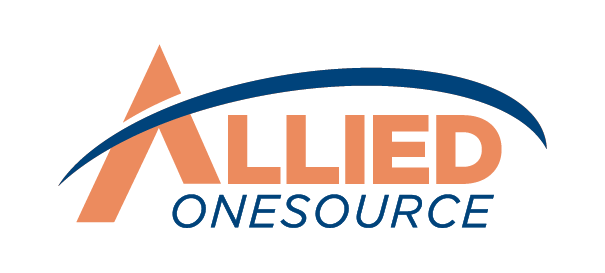Maximizing Holiday Hiring: How to Effectively Manage Temporary Staff During the Busy Season
Imagine dedicating hours crafting your resume for a job application, only to have it filtered out by an automated system before it ever reaches a hiring manager. Frustrating, right? For many job seekers, this scenario is all too common.
AI-driven Applicant Tracking Systems (ATS) play a major role in today’s hiring process. They screen resumes and filter them based on specific keywords, layout simplicity, and experience.
Understanding how ATS works and how to tailor your resume to optimize for ATS can be the key to standing out in the job market. This can significantly affect whether or not a hiring manager ever gets to see your resume.
Read More: Weighing Your Decision: 4 Key Factors Before Switching Jobs
Hacks For Creating an ATS-Optimized Resume
Here are practical strategies to help you create a resume that passes the ATS screen and catches the attention of hiring managers:
1. Use Keywords Strategically: Speak the Employer’s Language
One of the most crucial elements for getting past ATS is using the right keywords. Usually, job descriptions are a goldmine for relevant keywords. But simply copying words from the job description won’t cut it—you need to include keywords naturally throughout your resume, so they resonate with both the ATS and recruiters.
Start by carefully reviewing the job description to identify relevant terms that reflect the job’s core responsibilities and skills required for the role.
For example, if the role is in a call center, phrases like “customer satisfaction,” “CRM proficiency,” and “conflict resolution” are a pointer. Physically demanding or industrial jobs like a forklift operator could have terms like “equipment maintenance,” “safety compliance,” and “quality control.” as recurring terms to look out for.
Once you identify these terms, weave them into your resume’s descriptions in a way that feels authentic. Avoid keyword stuffing—randomly adding keywords without context can make your resume seem forced and could harm your chances.
Instead, focus on showcasing relevant achievements. For example, rather than listing “leadership”, and “conflict resolution” repeatedly, try something like, “Led a team of 10, improving response times by 20 percent through proactive conflict resolution.” This approach signals the right keywords to ATS and gives recruiters a clear sense of how you’ve applied those skills effectively.
Read More: What's Holding You Back? 5 Barriers to Career Advancement and How to Overcome Them
2. Choose ATS-Friendly Resume Formats: Simple Layouts Pass the Test
It’s tempting to use an eye-catching design, but complex formats can confuse ATS, causing the system to misinterpret or overlook important details. So, when choosing your resume format, simplicity is key.
Opt for a clean, straightforward layout that ATS can easily parse. Reverse chronological and hybrid formats, which prioritize recent experience and core skills, are generally most compatible with ATS. Avoid templates heavy on graphics, icons, or unusual formatting, as these can disrupt how ATS reads your resume.
It’s also important to keep your resume clean and structured. A few tweaks can make your resume ATS-friendly while maintaining a professional look. Use standard headers, such as “Work Experience” and “Education,” so the system can easily recognize and categorize. Bullet points also help organize information but keep them short and simple.
Stick to fonts like Arial, Calibri, or Times New Roman, which are universally readable across devices and systems. As for file type, PDF or Word documents are generally the safest options as these are widely accepted. Less common file formats may not parse correctly and could cause issues when submitted.
If you need help finding ATS-compatible resume templates, resume builders like JobScan, Indeed and Canva offer reliable options designed to pass through ATS smoothly. This ensures your resume reaches recruiters as intended.
Read More: Career Mistakes to Avoid
3. Emphasizing Relevant Experience: Aligning with Job Requirements
ATS not only looks for keywords but also scans for specific experiences that match the job requirements. Tailoring your resume to highlight relevant roles and achievements increases your chances of standing out.
For an administrative assistant position, for instance, it’s helpful to highlight experience with scheduling, document management, or client communication. An IT support applicant on the other hand, can emphasize their ability to diagnose and resolve technical issues quickly and efficiently.
Providing quantifiable results also strengthens your resume even further, as ATS often recognizes numbers and data. This is also impactful for hiring managers, as it signals value in a measurable way.
So instead of saying, “Assisted with record management,” an administrative candidate can say, “Managed a database of 500+ client files, reducing retrieval time by 30 percent through organized filing systems.” Both communicate the same thing but have different impacts.
4. Showcasing Industry-Specific Skills and Certifications: Targeting Key Qualifications
Including industry-specific skills and certifications, further boosts your chances of standing out, especially if the job requires specialized expertise.
For instance, certifications like Certified Nursing Assistant (CNA) for healthcare roles or FINRA certifications for banking should have a dedicated section in your resume, as ATS often looks for keywords under sections labeled “Certifications” or “Skills.” By placing relevant qualifications here, you increase the ATS and recruiters' visibility.
Tailor your skills list based on what’s mentioned in the job description. For example, for a banking role, emphasize “customer relations,” “regulatory compliance,” or “risk assessment,” while an automation engineer could highlight “PLC programming,” “control system design,” and “process automation.”
Furthermore, staying consistent with the language in the job description—such as “transaction accuracy” instead of “financial precision”—ensures the ATS matches your skills with what the employer is seeking. Avoid variations on terminology to prevent being overlooked by the system.
Read More: Understanding the Value You're Adding to Your Company
Beyond the Applicant Tracking System: Optimizing for Recruiter Review
While ATS compatibility is essential, your resume also needs to appeal to human recruiters who will eventually review it. Recruiters typically spend an average of 6-7 seconds to screen and determine if the resume is worth reading initially.¹ With such limited time, you want to immediately communicate that you're a strong fit for the role.
To make it easy for recruiters to scan through your resume, create a clear and easy-to-scan layout to convey your qualifications. Draft a compelling summary by framing your experiences to tell a story about your professional journey and impact. Keep your resume concise, ideally to one page if you’re early in your career or two pages if you’re more experienced.
Structure your descriptions to be as clear and direct as possible. Organize your resume so the most relevant skills and experiences appear at the top. This way, your strengths are positioned upfront, immediately providing value to the recruiter in the few seconds that you have their attention.
Adding a tailored cover letter—three concise paragraphs can make a lasting impression without overwhelming the recruiter.
While ATS might not analyze it, a personalized cover letter is often reviewed by recruiters and shows genuine interest in the role. In the cover letter, go beyond summarizing your resume. Mention what drew you to this company—whether it’s their values, their mission, or their reputation in the industry. Also, highlight unique skills that may not be as detailed on your resume.
This will ensure your resume not only passes the ATS but also makes a memorable impact on the recruiters, setting the stage for a deeper conversation about your candidacy.
Read More: Ace the Temp Job Interview: Key Questions and Answers
Ready to Craft an ATS-Friendly Resume that Stands Out?
At
Allied OneSource, we know what top employers are looking for and can connect job seekers like you with roles across various industries. Whether you’re refining your resume for ATS, need guidance on positioning yourself effectively, or finding the right placement to advance your career - our team is here to help.
Explore current openings on our website and discover the next step in your career.
Reference
1. Robert Henderson. (2024, January 26). You Need to Avoid These ATS Resume Formatting Mistakes. JobScan. https://www.jobscan.co/blog/ats-formatting-mistakes/










